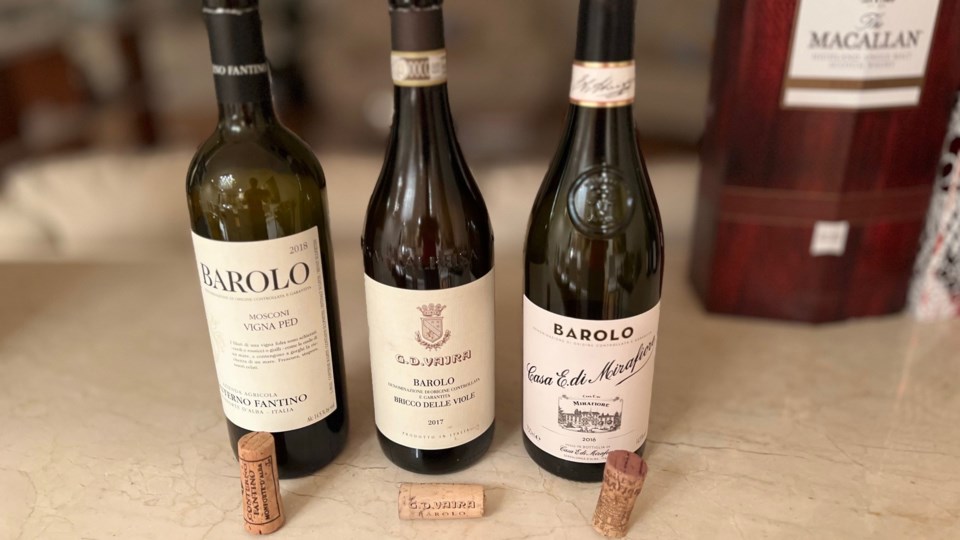Barolo wines are some of the most popular wines among consumers. Barolo is a wine region located in Piedmont, which is in Northwestern Italy near the borders of France and Switzerland. All Barolos are made with only Nebbiolo grapes, which are small, thick-skinned grapes that are generally high in acid and tannins.
These wines must be aged in oak for at least 18 months and wait for a minimum of 38 months before they can be released. Barolo wines labelled Riserva means they must be aged a minimum of 62 months before release. Barolos require long aging timelines because they are tannic wines.
Nebbiolo grapes are very hard to grow and for them to be used in Barolo wines, they must be grown between 170 to 540 metres above sea level in order to achieve optimal ripeness. The most valuable vineyards are located mid-slope, and face either southeast, south, or southwest, which gets maximum sun exposure and is where the spring snow melts first. Parcels that get such good sun exposure are labelled Sorì or Bricco. Bricco is the term used specifically for plots on the upper part of the hill.
In order to be labelled Barolo, there are maximum yields that limit how many grapes can be harvested in a given area. This pushes vine growers to select only the best grapes, and ultimately produce better wine. If a winemaker exceeds this maximum yield per area, the wine cannot be labelled Barolo and must be labelled Langhe, which is a bigger region where Barolo is located.
Barolo consist of 11 communes. The five most prominent communes produce 90 per cent of all Barolo wines. They are Barolo, La Morra, Castiglione Falletto, Serralunga d’Alba, and Monforte d’Alba. The commune that produces the most Barolo wines is La Morra.
Barolo can be divided into two broader regions: The Serralunga Valley, which encompasses the eastern communes of Castiglione Falletto, Monforte d’Alba, and Serralunga d’Alba, and the Central Valley, which covers Barolo and La Morra. The Serralunga Valley has sand and limestone soil, which produce more intense wines that need a longer ageing period to be drinkable. The Central Valley has clay soils, which produce softer, fruitier wines.
Traditionally, the fermentation and maceration of Nebbiolo grapes take place in large oak casks, which are used to soften the high tannins in Nebbiolo. But there is also a modern style of making Barolo that involves using shorter maceration and fermentation periods, as well as new french oak barrels to soften tannins and add vanilla flavours. Wines produced with this modern style will be approachable earlier but may not have as much intensity of flavours compared to Barolo wines made in the traditional style.
Barolos often need between 10 to 20 years for their tannins to soften so many new Barolos will not be ready to drink right away. But the best Barolo will have flavours and aromas such as red and black cherry, plums, roses, tobacco, tar, licorice and white truffles.
There is only really one way to find out if you like Barolo and that is to try it out for yourself. See my review of three Barolos you can find at B.C. Liquor stores here. Until next time, happy drinking!
Tony Kwan is the Richmond News' new columnist. Lawyer by day, food and wine lover by night, Kwan is an epicurean who writes about wine, food and enjoying all that life has to offer.



